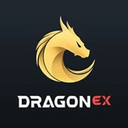1 Level
2 Review
1 Karma
Review on EOS by stan er

With the continuous development of blockchain technology, the branchchain…
With the continuous development of blockchain technology, the branchchain system has more and more branches. EOS is a product of the blockchain technology developed into the 3.0 era. It is like a microcosm of blockchain technology, and its advantages. Insufficiency exists at the same time, but we believe that over time, blockchain technology will be able to get a full boost to play its due value.
Pros
- EOS is a blockchain operating system designed for commercial distributed applications. EOS is a new blockchain architecture introduced to extend the performance of distributed applications. Note that it is not a currency like Bitcoin and Ethereum, but a token based on the EOS software project. This blockchain operating system has many advantages of its own, as listed below. 1. EOS creates a developer-friendly blockchain underlying platform, similar to the blockchain operating system, with powerful performance, can support multiple applications at the same time, can support multiple programming languages at the same time, for the development of dApp development Providing the underlying modules and lowering the development threshold, like Microsoft's windows, you say that Microsoft is worthless. 2. EOS solves the problem of latency and data throughput through parallel chain and DPOS. EOS can achieve a million-per-thousands of processing per second. At present, Bitcoin is 7 strokes per second, and Ethereum is 30-40. This super-power of EOS hangs Bitcoin and Ethernet. Such as the recent CryptoKitties| Collect and breed digital cats! This special fire ETH game, only one game accounted for about 15% of the throughput of ETH, if at the same time seven or eight similar games, ETH is estimated to hang up It’s scary to think about it. ETHs that cannot expand bandwidth can have significant challenges in throughput, and EOS can solve the above problems. EOS solves the problem of latency and data throughput through parallel chain and DPOS 3. EOS has no handling fee and will attract more ordinary users. And if you develop a dApp on EOS, the network and computing resources you need to use are allocated according to the proportion of EOS owned by the developer. To put it simply, if you own EOS, you have the equivalent of having a suite rented to someone else to rent, or a piece of land rent to build a house.
Cons
- First of all, almost all Internet technology solutions exist in the security issue EOS, EOS smart contract engine security performance is not enough to prevent DDOS attacks; EOS is a good distributed computing, but not a good public chain; EOS 21 super Node competition violates the core consensus of decentralization of blockchain (public chain). Security issues exist in almost all Internet technology solutions exist in EOS Secondly, EOS itself does not use special blockchain technology to illustrate the problem, and more often borrows the concept of big data processing in distributed computing and cloud computing to describe the processing problem. EOS doesn't have the blockchain as advertised, and there aren't so many innovations. Furthermore, it seems that EOS can achieve high-performance multi-node networks, support large DAPP, enterprise-level network computing requests, and so on. The 21 super nodes are separately released and verified one by one, and will support the safe and efficient network environment of the entire EOS in the future. However, this is equivalent to the fact that EOS actually uses a decentralized approach to build a weakly centralized EOS community framework, which violates the “decentralized” core of the blockchain and will directly lead EOS to become the 21 super node interest community. .












